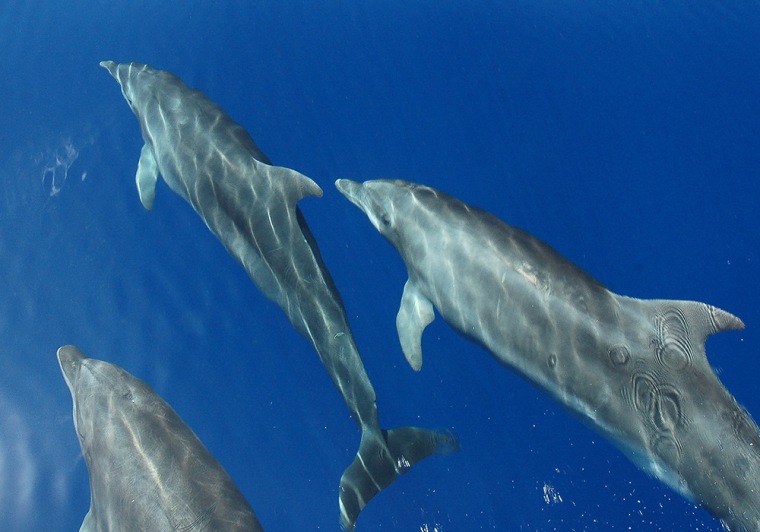The bottlenose dolphin die-off that began in July has been traveling steadily south with migrating Atlantic herds, and now diseased and dead dolphins are turning up in Florida. The culprit, a measles-like virus, has claimed 753 victims and counting, making this the worst outbreak ever recorded. Recently, the bug has also been spotted in two species of whale.
Three humpback whales and two pygmy whales, stranded and decaying, tested positive for the dolphin morbillivirus, preliminary sequencing has confirmed. NOAA researchers are doing more tests to find out if it was the virus, usually rare in these animals, that killed them.
"Most of them are very decomposed," Teri Rowles, of the NOAA Fishers Marine Mammal Stranding Response Program, told reporters on a teleconference call Friday. This has made observing the appearance of the disease in tissue samples harder, she said.
"Slightly elevated" stranding numbers for whales have been recorded in New York and Delaware, but it is too early to say if there is an outbreak. Researchers have tested three other marine mammal species for the virus: Common dolphins, spotted dolphins and harp seals sampled in various locations off the East coast seem free of the infection so far.
Meanwhile, the bug continues to take its toll on bottlenose herds. The last great die-off — classified by NOAA as an Unusual Mortality Event — killed about 740 dolphins off the Atlantic coast between August 1987 and April 1988. If this year's outbreak follows the same pattern, "we are less than half way through the time frame" the disease will take to fizzle out, Rowles said, and the death toll has already crossed that historical mark.
Resident Florida bottlenose herds could catch the virus, which spreads through close contact or shared air, Rowles said. Researchers are studying how much the local hosts interact with the visiting migrants, but they can't stop the virus from hopping.
"There is no vaccine that can be deployed for a large bottlenose dolphin population or any cetacean species," Rowles said. "Currently there is nothing that can be done to prevent the infection spreading, or prevent animals that get infected from having severe clinical disease."
The NOAA-led research collaboration studying the dolphin die-off has been chugging on all cylinders since July. The nationwide operation is coordinated by government scientists at NOAA but involves university labs and private research centers across the country.
The operation hit a small speed bump during the government shutdown, as NOAA scientists were not available to direct the movement of fresh samples. Of course, the die-off didn't let up, leaving some local stranding stations with freezers full of dead dolphins.
Humans are unlikely to be infected by the morbillivirus, as viruses are known to be very specific about the hosts they target. However, the morbillivirus weakens the dolphins' immune systems and secondary bacteria and fungal infections that may be lurking in the mammals may not be so choosy about infecting people, Rowles said.
If they aren't dead already, the animals that wash ashore are in distress and need medical attention. "What we’re trying to prevent people from doing is push them back out," she said.
If you see a stranded whale or dolphin, you can call your local stranding coordinator or the NOAA hotline at 1-877-WhaleHelp
You can also download and use the Dolphin & Whale 9-1-1 app which is available for Android, on iOS 6, and awaiting release for iOS 7.
NOAA has the following safety tips:
- Do not touch the dolphin.
- Don’t allow pets to approach the dolphin.
- Observe the animal from a safe distance of 100 yards (safe for you and the animal)
More about the mid-Atlantic dolphin die-off:
- Hundreds of dolphins may die before killer is identified
- Big break in dolphin die-off: It's an 'outbreak' of measles-like virus
- As dolphin die-off nears record high, shutdown puts investigation on ice
Nidhi Subbaraman writes about science and technology. You can follow her on Facebook, Twitter and Google+.
